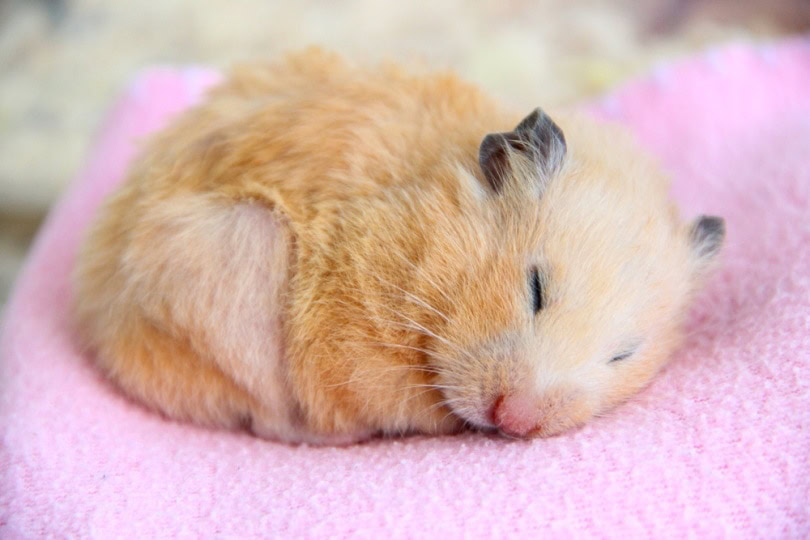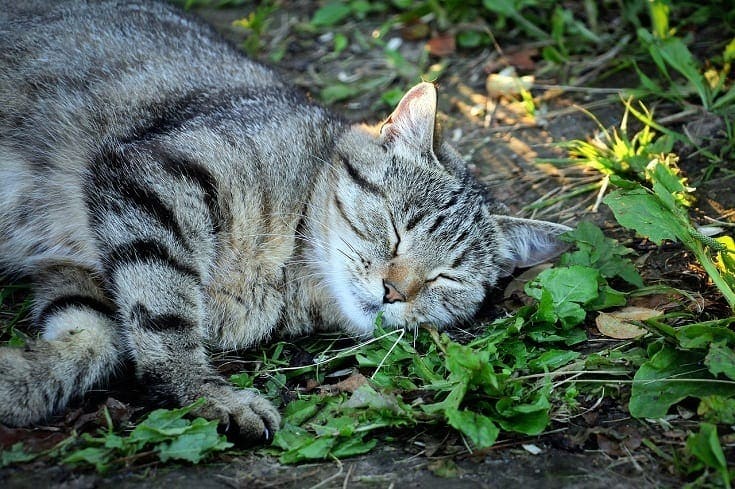VET APPROVED

The information is current and up-to-date in accordance with the latest veterinarian research.
Learn more »Click to Skip Ahead
If you have ever owned a hamster, you have probably marveled at how adorable they look when they sleep. Hamsters form this perfect ball of fur and warmth while burrowed in a cozy bed they have made from their bedding. Cuteness overload! Hamsters are crepuscular creatures, so you need to wait until twilight before you can play with them. However, should you expect your hamster to sleep longer during the colder months? Many small wild mammals hibernate during the winter to conserve energy while food is scarce.
But what about hamsters? Do they hibernate? No, hamsters do not truly hibernate, but they can enter a state of torpor under cold conditions. Originating from diverse climates, wild hamsters, including Syrian and dwarf species, can enter a state of torpor, but not true hibernation, when temperatures fall below 50°F (10°C). This temporary state of inactivity is characterized by longer sleep, reduced movement, and a cold sensation to the touch. While dwarf hamsters may exhibit reduced activity in colder temperatures, they do not typically enter a state of torpor. If you want to know about your rodent friend’s sleeping patterns, read on! This article goes over slight changes in your hamster’s sleep pattern during the colder months, as well as some interesting hamster facts.

Wild Hamsters vs Pet Hamsters
Although hamsters are native to China, Romania, Greece, and Belgium, they were first “discovered” in 1930 in Syria, a country with a warm and dry climate, by Israel Aharoni, a Jewish biologist. Wild hamsters will burrow underground to avoid extreme temperatures and stay hidden from predators. There are about 20 species of hamsters still in the wild, but some of those species are considered endangered.
Wild hamsters were first domesticated to be laboratory animals. These creatures are easy to domesticate and can be tamed in a few weeks. Hamsters are some of the most popular rodents to own as pets. The Syrian hamster is more commonly known as the teddy bear hamster, a popular pet found in classrooms and homes. Dwarf hamsters are common pets, as are Chinese hamsters.
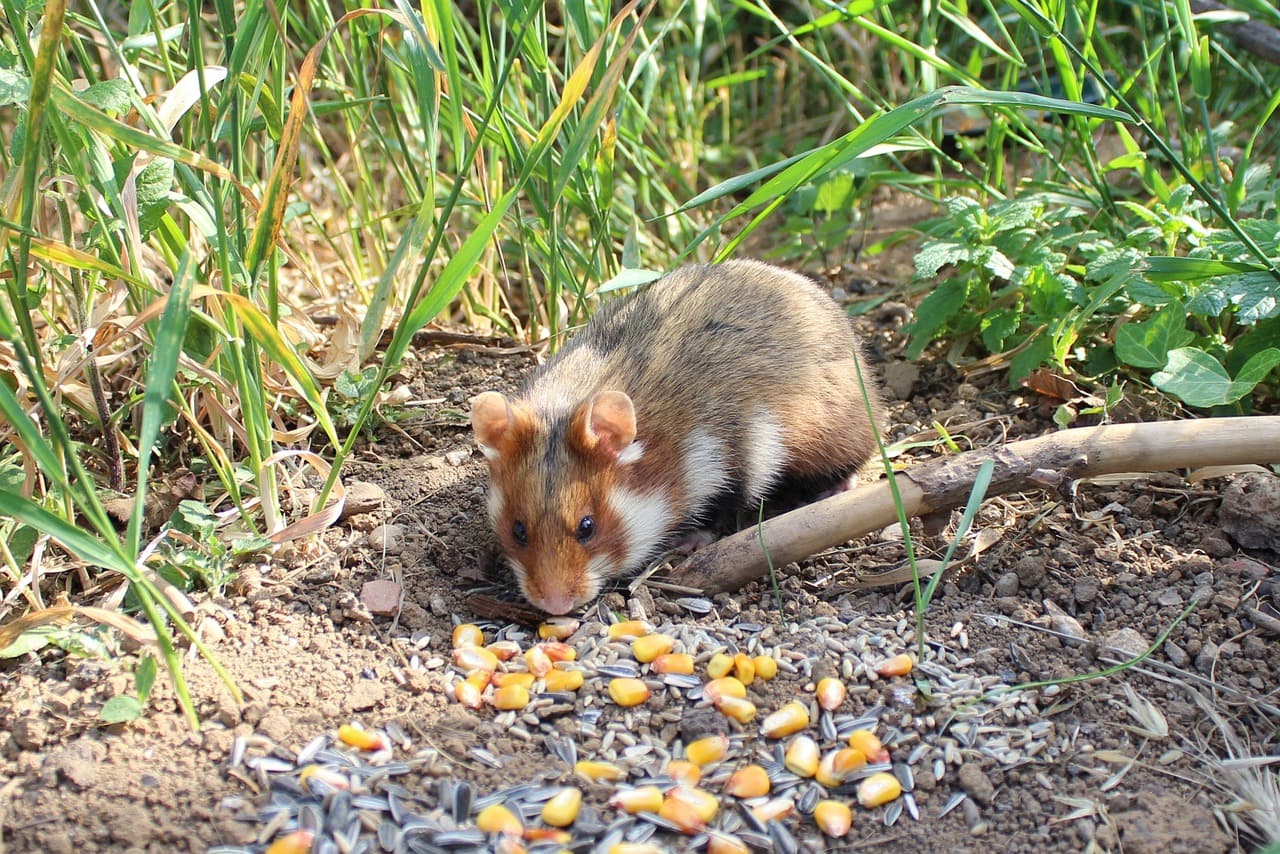
When Do Hamsters Hibernate?
Since wild hamsters do not normally hibernate because of the natural climate conditions, pet owners often expect that their pet hamsters will not hibernate. However, since pet hamsters live in environments different from their native habitats, they may enter a state of torpor under cold conditions. Torpor is best described as a temporary, mild form of hibernation that allows animals to conserve energy. Unlike true hibernation, torpor is short-term and triggered by low temperatures (below 50°F) or sudden environmental changes. During this state, a hamster’s body temperature drops, their breathing slows, and their heart rate decreases. A hamster in torpor may remain in this state for a few hours to a day, but should be gradually warmed up to prevent complications.

Is My Hamster Sick, Dead, Or In Torpor? (How to Tell)
Not knowing whether or not your hamster is sick, dead, or in torpor is a scary feeling! There are some common signs that your hamster is in torpor. First, they will be breathing very slowly, much slower than usual. Your hamster feels cold to the touch, and its whiskers will twitch a bit. Could your hamster be sick? Before calling the vet, check the temperature. If the room your hamster is quite chilly (59 degrees F or colder) and the hamster does not have sufficient bedding to stay warm, most likely, they are in torpor. Torpor is a natural way to conserve energy in animals when it is cold and does not mean the animal is sick.
Could your hamster be dead? When a hamster is in torpor, they are unresponsive and limp. It can also be hard to tell if they are breathing because their respiratory rate is much slower than usual. But the most effective way to tell if your hamster is dead or in torpor is to check for rigor mortis. Rigor mortis is when the body gets stiff and rigid after death. If your hamster is dead, its body will feel hard and stiff. If the hamster’s body is still soft, they are not dead, and you can breathe a sigh of relief.
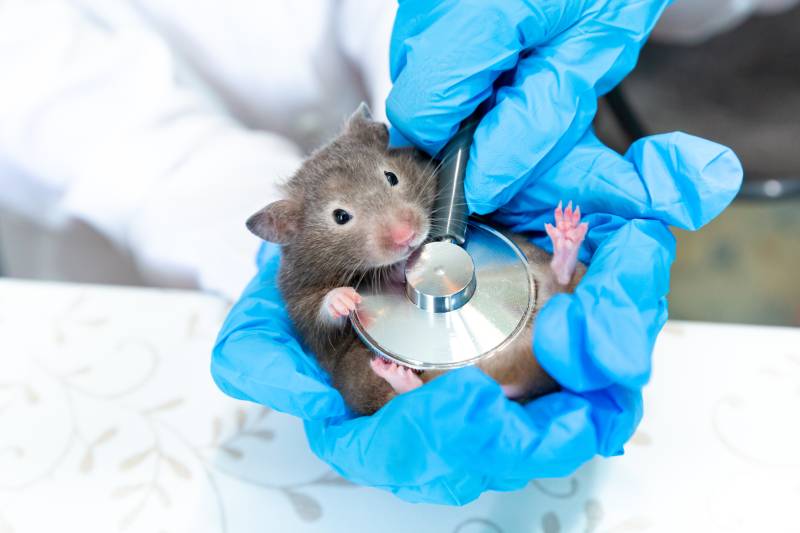

What Should I Do If My Hamster Is In Torpor?
If you are concerned about your hamster being in torpor, remember that this is a natural way for your pet to conserve energy. However, if you want to ensure they are not dead, there are a few things that you can do:
- Place a small cloth around them to help conserve their body heat. Do not cover their face because that will restrict their breathing.
- Move their cage into a warmer room. Make sure the cage is not near a vent blowing cold air or in a drafty place.
Do not try to shake a hamster to get them out of torpor. That is dangerous for the hamster and not practical. Hamsters can take 2-3 hours to get out of torpor. They begin to shiver as a way to get their body temperature rising. They might also stumble a bit when they try to walk. If your hamster has been in torpor for more than 24 hours or is not responding to warmth, contact your vet. Prolonged torpor can be life-threatening, and a veterinarian can assess whether there are any underlying health issues.
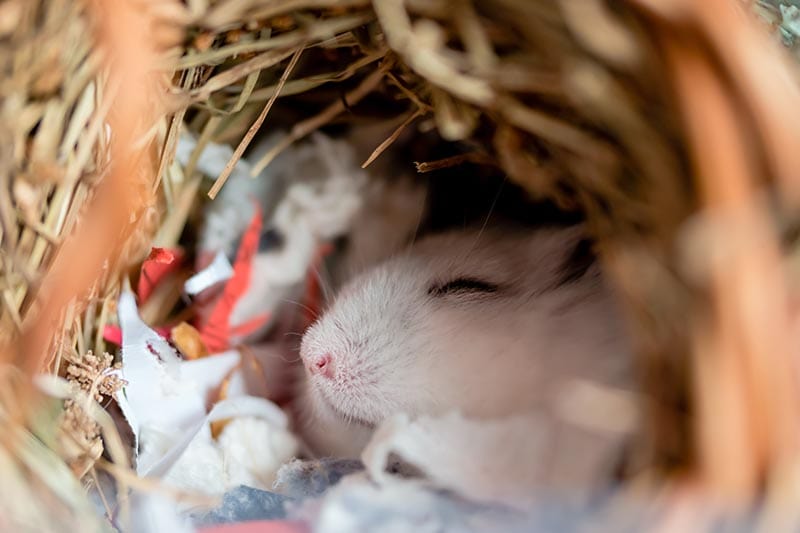

The 3 Interesting Hamster Facts
Now that you know some facts about hamsters and torpor, check out these other fascinating hamster facts that will make you the life of every party (maybe).
1. Hamsters Were Named Due to Their Cheeks
The hamster’s name in Arabic loosely translates to “ Saddlebags” because they fill their cheeks with food or bedding to transport it. They can carry up to half of their body weight in their cheek pouches. The name Mr. Saddlebags is both equally accurate and adorable. In German, the hamster’s name hamstern means “to hoard.” Accurate and adorable.
2. Hamster Teeth Never Stop Growing
A hamster’s incisors grow for its entire life. This is why you must give your hamster something to gnaw on. Without something to gnaw on, its teeth can get so long, it will cause feeding and medical complications.
3. Hamsters Have Moods
There have been studies that support the fact that hamsters can be in good moods or bad moods. Want a happy hamster? Give them healthy food, plenty of water, and have enriching things in their cages.
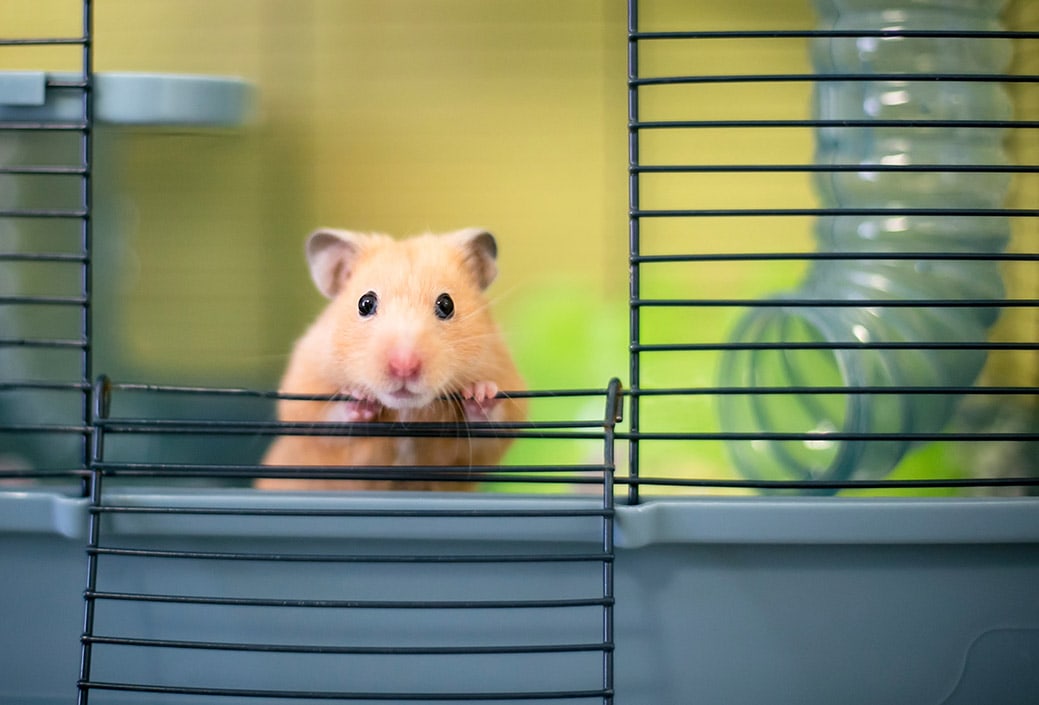

Conclusion
Hamsters may be small creatures, but they are incredibly resilient. That is shown in how these handfuls of fluff can survive colder temperatures by going into torpor. However, not all hamsters will go into torpor if they are in rooms with consistently warm temperatures (60°F or higher) and plenty of bedding. The best thing for your hamster is a caged environment that is clean, warm, and allows them to burrow when they want to sleep. And some hamster toys, of course.
Featured Image Credit: Alex Milan, Shutterstock
